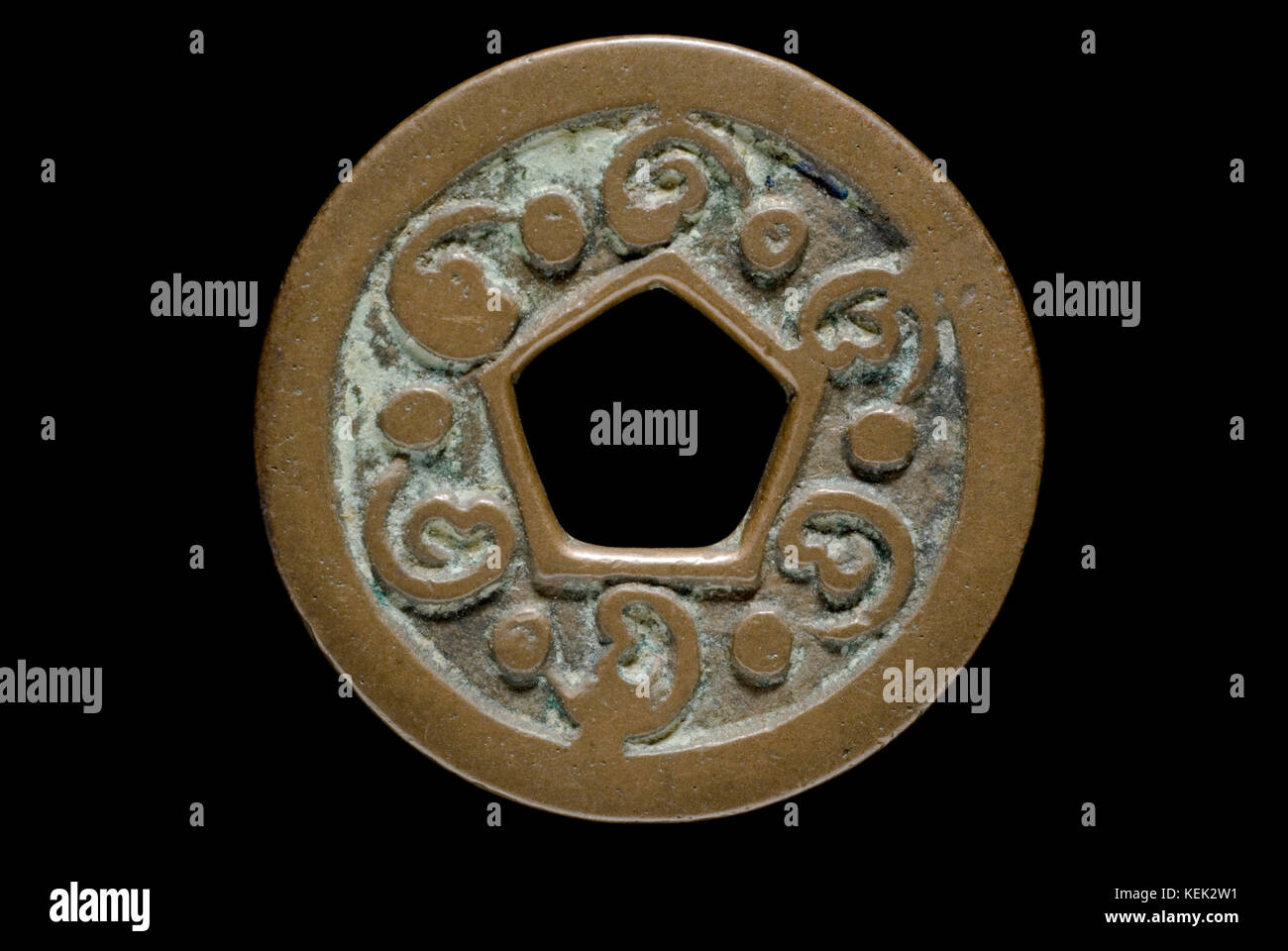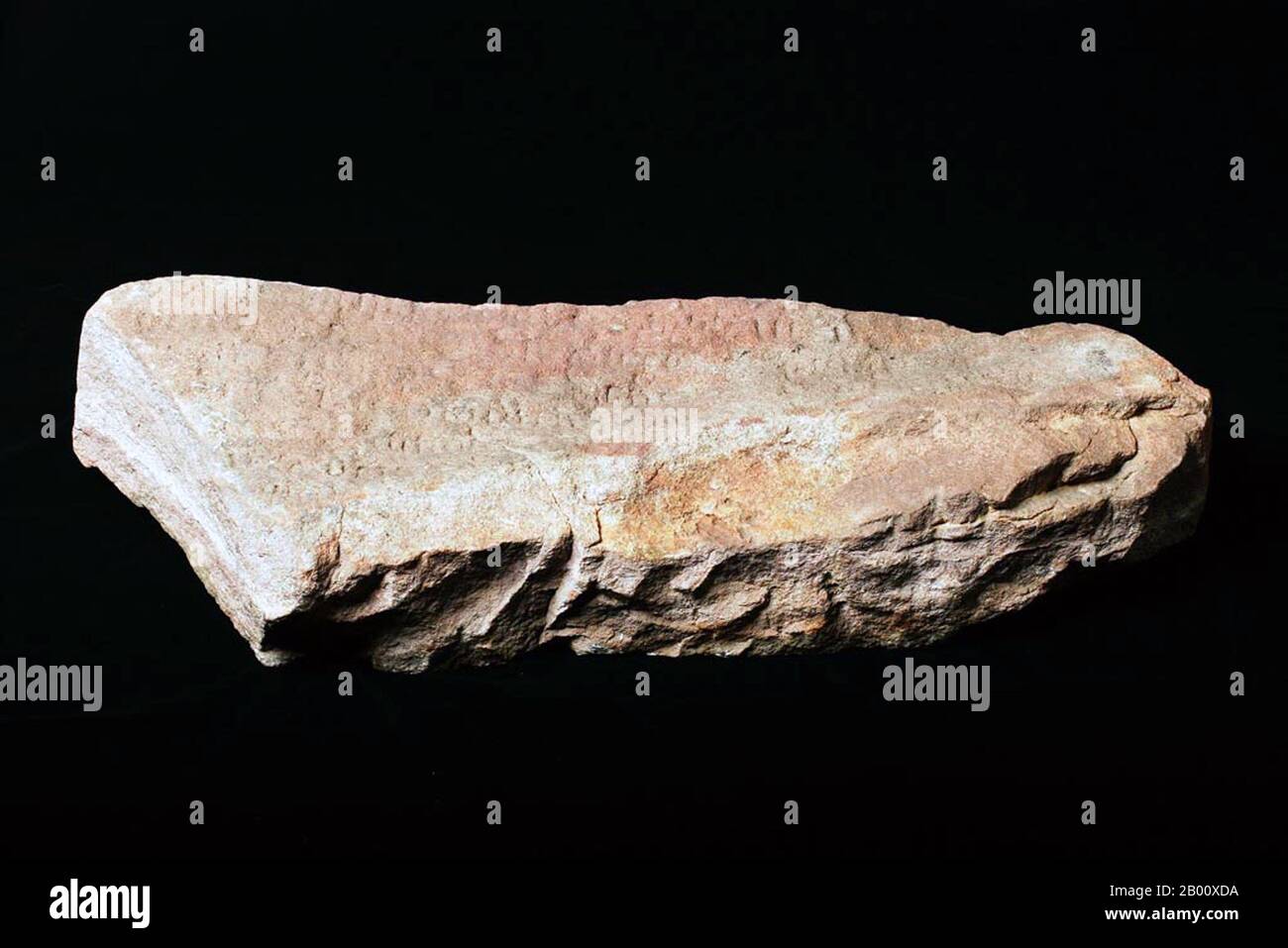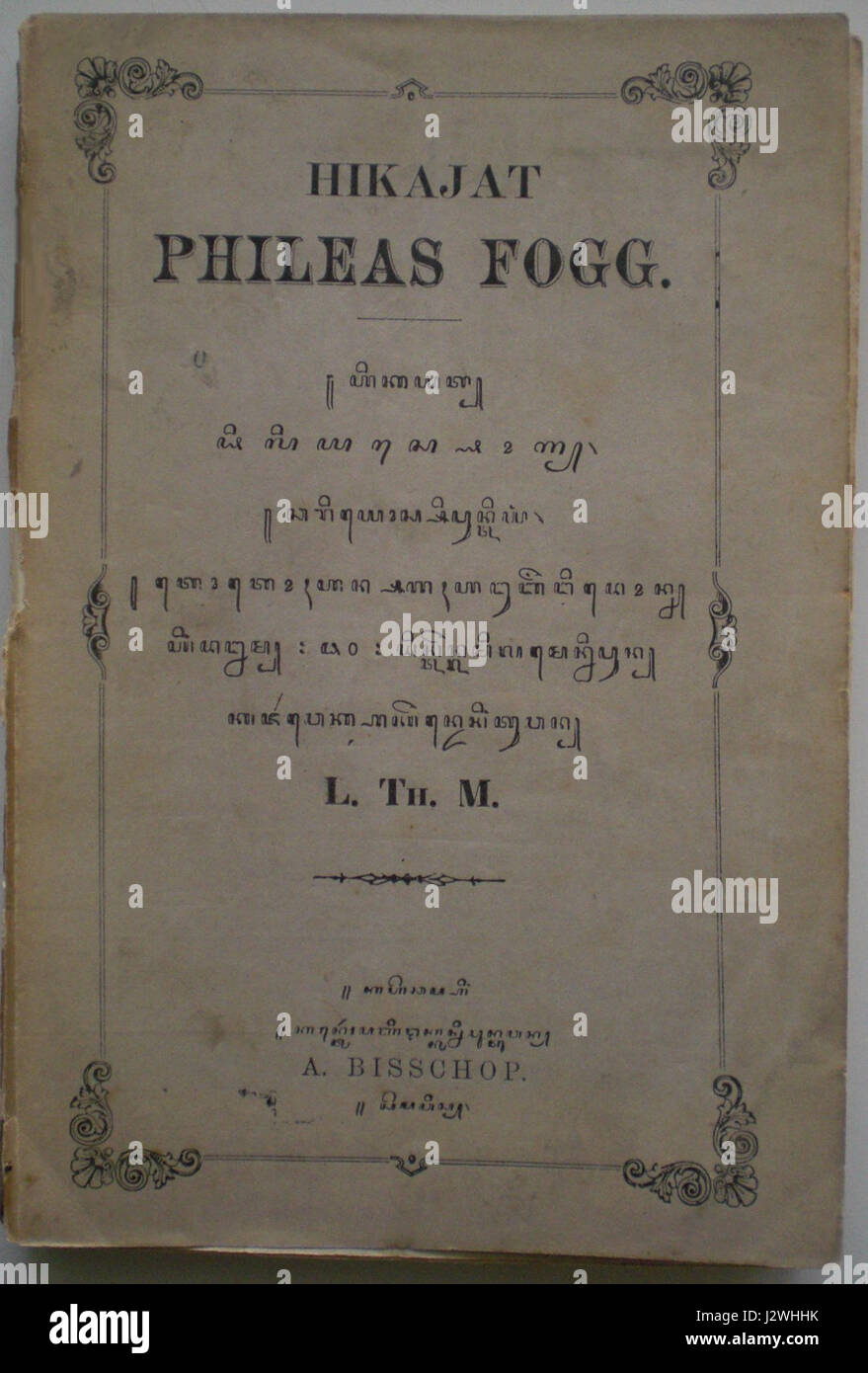Quick filters:
Old javanese script Stock Photos and Images
 Coin of the Indragiri Sultanate Stock Photohttps://www.alamy.com/image-license-details/?v=1https://www.alamy.com/stock-image-coin-of-the-indragiri-sultanate-163917853.html
Coin of the Indragiri Sultanate Stock Photohttps://www.alamy.com/image-license-details/?v=1https://www.alamy.com/stock-image-coin-of-the-indragiri-sultanate-163917853.htmlRMKEK2W1–Coin of the Indragiri Sultanate
 Inscribes slab (Old Javanese language, East Javanese Kawi script) from Candi Lor with a kalamukha on top (rear view); three statuettes (Surya, Nandi, femal dification imade), Residential house. Kediri, Kediri district, East Java province, 900-910 AD., photograph, Isidore Kinsbergen, Java, (possibly), Dec-1866 - Jan-1867, paper, albumen print, height, 290 mm × width, 240 mm Stock Photohttps://www.alamy.com/image-license-details/?v=1https://www.alamy.com/inscribes-slab-old-javanese-language-east-javanese-kawi-script-from-candi-lor-with-a-kalamukha-on-top-rear-view-three-statuettes-surya-nandi-femal-dification-imade-residential-house-kediri-kediri-district-east-java-province-900-910-ad-photograph-isidore-kinsbergen-java-possibly-dec-1866-jan-1867-paper-albumen-print-height-290-mm-width-240-mm-image606649391.html
Inscribes slab (Old Javanese language, East Javanese Kawi script) from Candi Lor with a kalamukha on top (rear view); three statuettes (Surya, Nandi, femal dification imade), Residential house. Kediri, Kediri district, East Java province, 900-910 AD., photograph, Isidore Kinsbergen, Java, (possibly), Dec-1866 - Jan-1867, paper, albumen print, height, 290 mm × width, 240 mm Stock Photohttps://www.alamy.com/image-license-details/?v=1https://www.alamy.com/inscribes-slab-old-javanese-language-east-javanese-kawi-script-from-candi-lor-with-a-kalamukha-on-top-rear-view-three-statuettes-surya-nandi-femal-dification-imade-residential-house-kediri-kediri-district-east-java-province-900-910-ad-photograph-isidore-kinsbergen-java-possibly-dec-1866-jan-1867-paper-albumen-print-height-290-mm-width-240-mm-image606649391.htmlRM2X6Y7DK–Inscribes slab (Old Javanese language, East Javanese Kawi script) from Candi Lor with a kalamukha on top (rear view); three statuettes (Surya, Nandi, femal dification imade), Residential house. Kediri, Kediri district, East Java province, 900-910 AD., photograph, Isidore Kinsbergen, Java, (possibly), Dec-1866 - Jan-1867, paper, albumen print, height, 290 mm × width, 240 mm
 Singapore: The Singapore Stone. The Singapore Stone is a fragment of a large sandstone slab which originally stood at the mouth of the Singapore River. The slab, which is believed to date back to at least the 13th century and possibly as early as the 10th or 11th century, bore an undeciphered inscription. Recent theories suggest that the inscription is either in Old Javanese or Sanskrit. It is likely that the person who commissioned the inscription was a Sumatran. The slab was blown up in 1843 to clear and widen the passageway at the river mouth to make space for a fort. Stock Photohttps://www.alamy.com/image-license-details/?v=1https://www.alamy.com/singapore-the-singapore-stone-the-singapore-stone-is-a-fragment-of-a-large-sandstone-slab-which-originally-stood-at-the-mouth-of-the-singapore-river-the-slab-which-is-believed-to-date-back-to-at-least-the-13th-century-and-possibly-as-early-as-the-10th-or-11th-century-bore-an-undeciphered-inscription-recent-theories-suggest-that-the-inscription-is-either-in-old-javanese-or-sanskrit-it-is-likely-that-the-person-who-commissioned-the-inscription-was-a-sumatran-the-slab-was-blown-up-in-1843-to-clear-and-widen-the-passageway-at-the-river-mouth-to-make-space-for-a-fort-image344228118.html
Singapore: The Singapore Stone. The Singapore Stone is a fragment of a large sandstone slab which originally stood at the mouth of the Singapore River. The slab, which is believed to date back to at least the 13th century and possibly as early as the 10th or 11th century, bore an undeciphered inscription. Recent theories suggest that the inscription is either in Old Javanese or Sanskrit. It is likely that the person who commissioned the inscription was a Sumatran. The slab was blown up in 1843 to clear and widen the passageway at the river mouth to make space for a fort. Stock Photohttps://www.alamy.com/image-license-details/?v=1https://www.alamy.com/singapore-the-singapore-stone-the-singapore-stone-is-a-fragment-of-a-large-sandstone-slab-which-originally-stood-at-the-mouth-of-the-singapore-river-the-slab-which-is-believed-to-date-back-to-at-least-the-13th-century-and-possibly-as-early-as-the-10th-or-11th-century-bore-an-undeciphered-inscription-recent-theories-suggest-that-the-inscription-is-either-in-old-javanese-or-sanskrit-it-is-likely-that-the-person-who-commissioned-the-inscription-was-a-sumatran-the-slab-was-blown-up-in-1843-to-clear-and-widen-the-passageway-at-the-river-mouth-to-make-space-for-a-fort-image344228118.htmlRM2B00XDA–Singapore: The Singapore Stone. The Singapore Stone is a fragment of a large sandstone slab which originally stood at the mouth of the Singapore River. The slab, which is believed to date back to at least the 13th century and possibly as early as the 10th or 11th century, bore an undeciphered inscription. Recent theories suggest that the inscription is either in Old Javanese or Sanskrit. It is likely that the person who commissioned the inscription was a Sumatran. The slab was blown up in 1843 to clear and widen the passageway at the river mouth to make space for a fort.
 Javanese script example Stock Photohttps://www.alamy.com/image-license-details/?v=1https://www.alamy.com/stock-photo-javanese-script-example-142857667.html
Javanese script example Stock Photohttps://www.alamy.com/image-license-details/?v=1https://www.alamy.com/stock-photo-javanese-script-example-142857667.htmlRMJ8BMBF–Javanese script example
 Inscribes slab (Old Javanese language, East Javanese Kawi script) from Candi Lor with a kalamukha on top (rear view); three statuettes (Surya, Nandi, femal dification imade), Residential house. Kediri, Kediri district, East Java province, 900-910 AD., 1866 - 1867 photograph Java (possibly) paper. photographic support. cardboard albumen print Stock Photohttps://www.alamy.com/image-license-details/?v=1https://www.alamy.com/inscribes-slab-old-javanese-language-east-javanese-kawi-script-from-candi-lor-with-a-kalamukha-on-top-rear-view-three-statuettes-surya-nandi-femal-dification-imade-residential-house-kediri-kediri-district-east-java-province-900-910-ad-1866-1867-photograph-java-possibly-paper-photographic-support-cardboard-albumen-print-image591938169.html
Inscribes slab (Old Javanese language, East Javanese Kawi script) from Candi Lor with a kalamukha on top (rear view); three statuettes (Surya, Nandi, femal dification imade), Residential house. Kediri, Kediri district, East Java province, 900-910 AD., 1866 - 1867 photograph Java (possibly) paper. photographic support. cardboard albumen print Stock Photohttps://www.alamy.com/image-license-details/?v=1https://www.alamy.com/inscribes-slab-old-javanese-language-east-javanese-kawi-script-from-candi-lor-with-a-kalamukha-on-top-rear-view-three-statuettes-surya-nandi-femal-dification-imade-residential-house-kediri-kediri-district-east-java-province-900-910-ad-1866-1867-photograph-java-possibly-paper-photographic-support-cardboard-albumen-print-image591938169.htmlRM2WB134W–Inscribes slab (Old Javanese language, East Javanese Kawi script) from Candi Lor with a kalamukha on top (rear view); three statuettes (Surya, Nandi, femal dification imade), Residential house. Kediri, Kediri district, East Java province, 900-910 AD., 1866 - 1867 photograph Java (possibly) paper. photographic support. cardboard albumen print
 I Wayan Edi Wistara, a Balinese palm-leaf manuscript practicioner, is rewriting old Balinese texts onto palm leafs at his house in Karangasem, Bali, Indonesia. 'Lontars were written in the ancient literary texts composed in the old Javanese language of Kawi and Sanskrit. Balinese script is considered to be one of the complex scripts from Southeast Asia,' wrote a team of scientists led by Made Windu Antara Kesiman (Laboratoire Informatique Image Interaction, University of La Rochelle), during the 15th International Conference on Frontiers in Handwriting Recognition 2016 in Shenzen, China. Stock Photohttps://www.alamy.com/image-license-details/?v=1https://www.alamy.com/i-wayan-edi-wistara-a-balinese-palm-leaf-manuscript-practicioner-is-rewriting-old-balinese-texts-onto-palm-leafs-at-his-house-in-karangasem-bali-indonesia-lontars-were-written-in-the-ancient-literary-texts-composed-in-the-old-javanese-language-of-kawi-and-sanskrit-balinese-script-is-considered-to-be-one-of-the-complex-scripts-from-southeast-asia-wrote-a-team-of-scientists-led-by-made-windu-antara-kesiman-laboratoire-informatique-image-interaction-university-of-la-rochelle-during-the-15th-international-conference-on-frontiers-in-handwriting-recognition-2016-in-shenzen-china-image468087676.html
I Wayan Edi Wistara, a Balinese palm-leaf manuscript practicioner, is rewriting old Balinese texts onto palm leafs at his house in Karangasem, Bali, Indonesia. 'Lontars were written in the ancient literary texts composed in the old Javanese language of Kawi and Sanskrit. Balinese script is considered to be one of the complex scripts from Southeast Asia,' wrote a team of scientists led by Made Windu Antara Kesiman (Laboratoire Informatique Image Interaction, University of La Rochelle), during the 15th International Conference on Frontiers in Handwriting Recognition 2016 in Shenzen, China. Stock Photohttps://www.alamy.com/image-license-details/?v=1https://www.alamy.com/i-wayan-edi-wistara-a-balinese-palm-leaf-manuscript-practicioner-is-rewriting-old-balinese-texts-onto-palm-leafs-at-his-house-in-karangasem-bali-indonesia-lontars-were-written-in-the-ancient-literary-texts-composed-in-the-old-javanese-language-of-kawi-and-sanskrit-balinese-script-is-considered-to-be-one-of-the-complex-scripts-from-southeast-asia-wrote-a-team-of-scientists-led-by-made-windu-antara-kesiman-laboratoire-informatique-image-interaction-university-of-la-rochelle-during-the-15th-international-conference-on-frontiers-in-handwriting-recognition-2016-in-shenzen-china-image468087676.htmlRM2J5F6H0–I Wayan Edi Wistara, a Balinese palm-leaf manuscript practicioner, is rewriting old Balinese texts onto palm leafs at his house in Karangasem, Bali, Indonesia. 'Lontars were written in the ancient literary texts composed in the old Javanese language of Kawi and Sanskrit. Balinese script is considered to be one of the complex scripts from Southeast Asia,' wrote a team of scientists led by Made Windu Antara Kesiman (Laboratoire Informatique Image Interaction, University of La Rochelle), during the 15th International Conference on Frontiers in Handwriting Recognition 2016 in Shenzen, China.
 Inscribes slab (Old Javanese language, East Javanese Kawi script) from Candi Lor with a kalamukha on top (rear view); three statuettes (Surya, Nandi, femal dification imade), Residential house. Kediri, Kediri district, East Java province, 900-910 AD.. Stock Photohttps://www.alamy.com/image-license-details/?v=1https://www.alamy.com/inscribes-slab-old-javanese-language-east-javanese-kawi-script-from-candi-lor-with-a-kalamukha-on-top-rear-view-three-statuettes-surya-nandi-femal-dification-imade-residential-house-kediri-kediri-district-east-java-province-900-910-ad-image430273847.html
Inscribes slab (Old Javanese language, East Javanese Kawi script) from Candi Lor with a kalamukha on top (rear view); three statuettes (Surya, Nandi, femal dification imade), Residential house. Kediri, Kediri district, East Java province, 900-910 AD.. Stock Photohttps://www.alamy.com/image-license-details/?v=1https://www.alamy.com/inscribes-slab-old-javanese-language-east-javanese-kawi-script-from-candi-lor-with-a-kalamukha-on-top-rear-view-three-statuettes-surya-nandi-femal-dification-imade-residential-house-kediri-kediri-district-east-java-province-900-910-ad-image430273847.htmlRM2G00JK3–Inscribes slab (Old Javanese language, East Javanese Kawi script) from Candi Lor with a kalamukha on top (rear view); three statuettes (Surya, Nandi, femal dification imade), Residential house. Kediri, Kediri district, East Java province, 900-910 AD..
 Yerevan, Armenia - November 22, 2024: Javanese manuscript on palm leaf in Matenadaran museum (Mesrop Mashtots Institute of Ancient Manuscripts) in Yer Stock Photohttps://www.alamy.com/image-license-details/?v=1https://www.alamy.com/yerevan-armenia-november-22-2024-javanese-manuscript-on-palm-leaf-in-matenadaran-museum-mesrop-mashtots-institute-of-ancient-manuscripts-in-yer-image635185693.html
Yerevan, Armenia - November 22, 2024: Javanese manuscript on palm leaf in Matenadaran museum (Mesrop Mashtots Institute of Ancient Manuscripts) in Yer Stock Photohttps://www.alamy.com/image-license-details/?v=1https://www.alamy.com/yerevan-armenia-november-22-2024-javanese-manuscript-on-palm-leaf-in-matenadaran-museum-mesrop-mashtots-institute-of-ancient-manuscripts-in-yer-image635185693.htmlRF2YWB5R9–Yerevan, Armenia - November 22, 2024: Javanese manuscript on palm leaf in Matenadaran museum (Mesrop Mashtots Institute of Ancient Manuscripts) in Yer
 80days in Javanese script Stock Photohttps://www.alamy.com/image-license-details/?v=1https://www.alamy.com/stock-photo-80days-in-javanese-script-139474879.html
80days in Javanese script Stock Photohttps://www.alamy.com/image-license-details/?v=1https://www.alamy.com/stock-photo-80days-in-javanese-script-139474879.htmlRMJ2WHHK–80days in Javanese script
 Stories of Amir Hamzah, in handwritten Javanese script Stock Photohttps://www.alamy.com/image-license-details/?v=1https://www.alamy.com/stock-photo-stories-of-amir-hamzah-in-handwritten-javanese-script-140497704.html
Stories of Amir Hamzah, in handwritten Javanese script Stock Photohttps://www.alamy.com/image-license-details/?v=1https://www.alamy.com/stock-photo-stories-of-amir-hamzah-in-handwritten-javanese-script-140497704.htmlRMJ4G674–Stories of Amir Hamzah, in handwritten Javanese script
 Raden Segara (Madurese in Javanese script published in 1890) Stock Photohttps://www.alamy.com/image-license-details/?v=1https://www.alamy.com/stock-photo-raden-segara-madurese-in-javanese-script-published-in-1890-140390864.html
Raden Segara (Madurese in Javanese script published in 1890) Stock Photohttps://www.alamy.com/image-license-details/?v=1https://www.alamy.com/stock-photo-raden-segara-madurese-in-javanese-script-published-in-1890-140390864.htmlRMJ4B9YC–Raden Segara (Madurese in Javanese script published in 1890)
 Raden Segara (Madurese in Javanese script published in 1890) (cropped) Stock Photohttps://www.alamy.com/image-license-details/?v=1https://www.alamy.com/stock-photo-raden-segara-madurese-in-javanese-script-published-in-1890-cropped-140365056.html
Raden Segara (Madurese in Javanese script published in 1890) (cropped) Stock Photohttps://www.alamy.com/image-license-details/?v=1https://www.alamy.com/stock-photo-raden-segara-madurese-in-javanese-script-published-in-1890-cropped-140365056.htmlRMJ4A51M–Raden Segara (Madurese in Javanese script published in 1890) (cropped)